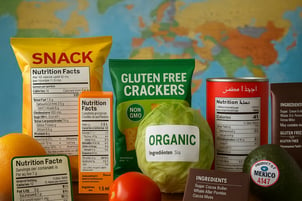A Guide to Cosmetics Regulations in Europe
The cosmetic and personal care market in Australia has experienced consistent growth thanks to consumer interest in clean beauty, sustainable ingredients, and new innovative formats. Rising interest from local startups to global-scale beauty manufacturers is happening now, presenting an enormous market opportunity for those who can meet bold regulatory expectations under modern cosmetic regulations.
Regulatory compliance is important for both domestic producers and international brands. Strong cosmetic compliance allows for consumer trust, legal access, and a way to scale the business over time. Being aware of the different channels of cosmetic regulations Australia will provide pathways to market access and reduce the risk of making costly mistakes.
Key Regulatory Authorities in Australia
Therapeutic Goods Administration (TGA)
The TGA is Australia's national authority to regulate therapeutic goods. Most cosmetic products are outside the TGA's scope, except when a product makes therapeutic claims such as treating acne, healing, or UV protection—claims that fall under cosmetic products regulation. Therapeutic products must be tested rigorously, listed in the Australian Register of Therapeutic Goods (ARTG), and meet the effectiveness and safety requirements.
Australian Industrial Chemicals Introduction Scheme (AICIS)
The AICIS has authority over chemical use in Australia, including uses of cosmetic formulations. All cosmetic ingredients must either be on the Australian Inventory of Industrial Chemicals (AIIC) or supplied under a recognized exemption. If you are using new, or unlisted ingredients, you will need to complete risk assessments before using them. This is particularly important if they exceed 1% of your formulation or can cause environmental risk.
Australian Competition and Consumer Commission (ACCC)
he ACCC oversees labelling, marketing claims, and product safety standards under Australian consumer law. It requires cosmetic products to have clear and compliant labels, full INCI ingredient lists, and non-misleading claims. Brands must scientifically substantiate every claim to avoid penalties and recalls. This body is central to ensuring proper cosmetic labelling Australia requirements are met.
Cosmetic vs Therapeutic Product
In Australia, a cosmetic is defined as a substance applied externally (or in the mouth) for the purpose of cleansing the body, enhancing beauty or appearance, maintaining the body, or protecting the body. In contrast, a therapeutic product is a substance used to treat, mitigate, or prevent disease or deterioration of physiological conditions.
However, the definition can get complicated, such as with these examples:
-
Acne creams (this may be a cosmetic if it's mild and merely offered as a cleansing product, and therapeutic if the product is stated to treat acne)
-
Anti-aging serums (this may be a cosmetic if it's offered as an appearance product, and therapeutic if it has biological function)
-
Sunscreen (this may be a cosmetic where the active ingredient or SPF is secondary, or therapeutic sunscreen where the stated purpose is protection against UVs)
This classification affects regulatory pathways. Therapeutic goods must follow GMP, be listed on the ARTG, and comply with advertising restrictions. Cosmetics, however, must follow AICIS chemical compliance, ACCC safety standards, and local cosmetic regulations Australia.
Compliance Challenges and Industry Trends
Recent Regulatory Updates
-
Ingredient safety reassessments by AICIS and ACCC have led to tightened restrictions on certain preservatives, fragrances, and microplastics.
-
Regulatory alignment efforts with international frameworks (such as EU REACH or ASEAN standards) are ongoing to streamline approvals.
Push Toward Transparency and Sustainability
-
Australia is experiencing a significant shift toward ingredient transparency, with consumers demanding clarity on product composition, sourcing, and safety.
-
Brands are increasingly expected to disclose sourcing practices, especially regarding palm oil, mica, and other high-risk ingredients.
The Rise of Clean and Green Beauty
-
There's a marked growth in demand for “clean beauty”, formulas free from parabens, sulfates, phthalates, and synthetic fragrances.
-
Eco-friendly packaging, vegan certifications, and cruelty-free claims are no longer niche, they are fast becoming industry norms.
-
However, “greenwashing” is under scrutiny. ACCC requires any environmental or ethical claims to be substantiated, clear, and not misleading.
Final Thoughts
Navigating cosmetic regulations and achieving long-term cosmetic compliance in Australia is complex, yet highly rewarding for brands that prioritize diligence. Success relies not just on innovative formulations but on a deep understanding of cosmetic regulations Australia, the differences between cosmetic and therapeutic pathways, and adherence to AICIS, TGA, and ACCC rules.
As the industry evolves toward safety, transparency, and sustainability, brands that meet cosmetic labelling Australia requirements, substantiate claims, and follow global safety frameworks will gain strong consumer trust and market longevity.
Jul 15, 2025 5:32:10 PM







